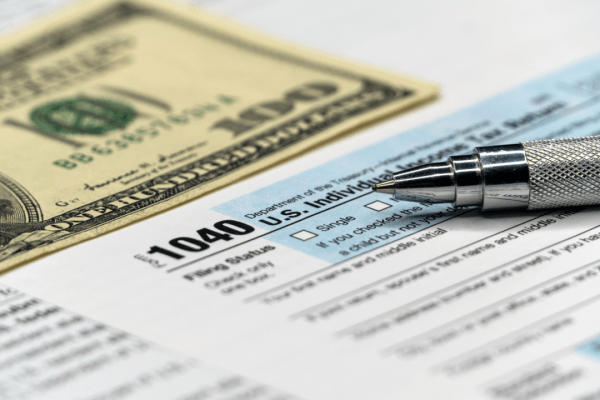
IRS Debt Forgiveness Eligibility | Your Path to Tax Relief
Requirements Explained and IRS Debt Forgiveness Eligibility Criteria
IRS debt forgiveness eligibility depends on meeting specific financial hardship requirements established by federal tax law. Taxpayers facing genuine economic difficulty may qualify for various relief programs that reduce or eliminate outstanding tax obligations. Understanding these qualification standards is essential for anyone struggling with unpaid federal taxes.
The Internal Revenue Service offers several debt forgiveness programs designed to help taxpayers resolve their tax obligations when full payment creates financial hardship. These programs include Offer in Compromise, Currently Not Collectible status, and installment agreements with penalty abatement. Visit the official IRS website for complete program details and current application forms.
Income Requirements: Who Qualifies for Tax Debt Relief
Your income level directly impacts your IRS debt forgiveness eligibility. The IRS evaluates your monthly income against necessary living expenses to determine if you qualify for relief programs.
To qualify for most forgiveness programs, your income must fall below specific thresholds based on your family size and geographic location. The IRS uses Collection Financial Standards available on the U.S. Department of Treasury website to evaluate your financial capacity.
Primary Qualification Factors
Financial Hardship Documentation You must demonstrate that paying your full tax debt would prevent you from meeting basic living expenses. The IRS requires detailed financial statements showing your monthly income and necessary expenses.
Asset Evaluation The IRS examines your assets, including real estate, vehicles, and investments, to determine your overall financial position. Excessive assets may disqualify you from certain forgiveness programs.
Tax Compliance History Your filing history affects IRS debt forgiveness eligibility. You must be current with all required tax returns and estimated payments to qualify for most relief programs.
Application Process: Steps to Request Debt Forgiveness
The application process for IRS debt forgiveness eligibility varies depending on the specific program you’re pursuing. Most applications require Form 656 (Offer in Compromise) or Form 433-A (Collection Information Statement).
Required Documentation
- Complete financial statements for the past three years
- Bank statements and asset valuations
- Proof of income and monthly expenses
- Tax returns for all unfiled years
The IRS typically takes 6-12 months to process debt forgiveness applications. During this review period, collection activities are generally suspended.
Program Options: Types of Available Tax Relief
Offer in Compromise This program allows qualified taxpayers to settle their tax debt for less than the full amount owed. IRS debt forgiveness eligibility for this program requires proving that full payment would create financial hardship.
Currently Not Collectible Status Taxpayers facing temporary financial hardship may qualify for suspension of collection activities. This status doesn’t forgive the debt but provides relief from immediate collection pressure.
Penalty Abatement The IRS may forgive penalties associated with your tax debt if you demonstrate reasonable cause for late payment or filing.
Documentation Essentials: Proving Your Financial Situation
Successful IRS debt forgiveness eligibility applications require comprehensive financial documentation. The IRS scrutinizes your financial information to verify genuine hardship.
Essential documents include recent pay stubs, bank statements, mortgage or rent receipts, and proof of monthly living expenses. Medical bills, unemployment documentation, and business loss records strengthen your hardship claim.
Common Disqualifying Factors
- Hidden assets or unreported income
- Luxury purchases during financial hardship periods
- Failure to file required tax returns
- Recent significant income increases
Strategic Benefits: Why Pursue Tax Debt Forgiveness
Meeting IRS debt forgiveness eligibility requirements can provide substantial financial relief. Successful applicants often reduce their tax obligations by 70-90% through Offer in Compromise programs.
Debt forgiveness eliminates the stress of ongoing collection activities, including wage garnishments and bank levies. It also prevents the accumulation of additional penalties and interest on your outstanding tax balance.
Take Action Today: Start Your Debt Relief Journey
Don’t let mounting tax debt destroy your financial future. Professional tax resolution specialists can evaluate your IRS debt forgiveness eligibility and guide you through the complex application process. Every day you delay increases your total debt through accumulating penalties and interest.
Contact our qualified tax professional today to review your specific situation and determine your best path forward. Protect your assets and regain financial stability through proper debt relief planning.
Frequently Asked Questions
1. What income level qualifies for IRS debt forgiveness?
The IRS doesn’t set specific income limits but evaluates your ability to pay based on necessary living expenses and family size using their Collection Financial Standards. These standards are updated annually and available through the Federal Register for public review.
2. How long does the debt forgiveness application process take?
Most IRS debt forgiveness applications take 6-12 months to process, though complex cases may require additional time for review and documentation.
3. Can I apply for debt forgiveness if I'm currently employed?
Yes, employment doesn’t automatically disqualify you from IRS debt forgiveness eligibility if your income barely covers necessary living expenses.
4. What happens if my debt forgiveness application is rejected?
You can appeal the decision, provide additional documentation, or explore alternative payment arrangements like installment agreements with the IRS.
5. Do I need professional help for debt forgiveness applications?
While not required, professional assistance significantly improves your chances of approval due to the complex documentation and qualification requirements involved.
Key Takeaways
- The IRS accepts only 25% of settlement applications, requiring genuine financial hardship documentation
- Settlement amounts typically range from 10-50% of total debt based on actual payment ability
- Professional assistance significantly improves approval chances and ensures proper documentation
- The process takes 6-12 months and requires comprehensive financial disclosure
- Alternative resolution options may be more appropriate than settlements for many taxpayers
Free Tax Case Review
If you are struggling with tax debt or have received a letter from the IRS complete the form below.IRS Audit
You received an audit notice from the IRS
Tax Debt Relief
You owe the IRS money and are looking for relief options
Wage Garnishment
The IRS is taking part of your wages to pay off your debt
Tax Lien
The IRS put a legal claim on your property
IRS Property Seizure
The IRS is going to take your property to pay down or pay off your tax debt
Penalty Abatement
You want to request to remove or reduce penalties assessed by IRS
Innocent Spouse Relief
Relief from joint tax debt caused by your spouse or former spouse
Tax Debt FAQ
Common facts, questions and answers about tax debt and tax debt reilef
Tax Debt Lawyer
A tax debt lawyer can help you with your tax debt problems
Recent Posts
- How Do I Settle a Debt Lawsuit | Your Complete Resolution Guide
- Can You Dispute a Debt if it Was Sold to a Collection Agency?
- Is It Better to Settle a Debt or Go to Court?
- Debt Collection and Lawsuits | A Complete Guide to Your Rights and Legal Options
- Will the IRS Really Settle for Less? The Truth About Tax Debt Settlement



